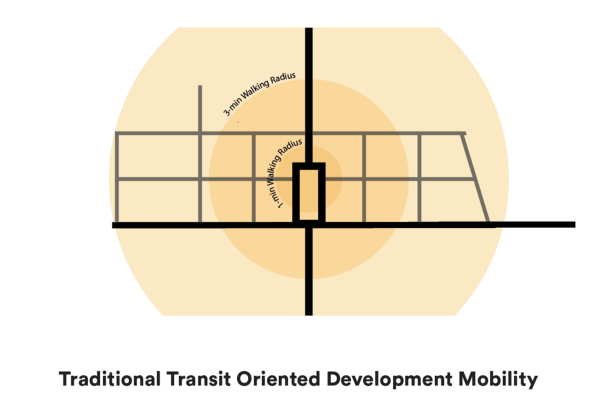What City Observatory did this week
1. Cappucino City. Our friend and colleague Alex Baca offers the first of her three-part review of Derek Hyra’s book “The Cappucino City.” Baca, a former Washington DC journalist takes a close and critical look at Hyra’s claim that the gentrification of Shaw and other Washington neighborhoods is propelled by a desire of many young whites to “live the wire.”
2. The Limits of Ethnography: Cappuccino City Review, Part 2. In the second part of her review, Alex takes a close look at the methodology that Hyra (and many others) have used to characterize the dynamics and effects of gentrification “ethnography.” While interviewing long-time neighborhood residents and newcomers sheds light on the motivations and consequences of change for individuals, it’s not a particularly useful means of identifying the larger market trends and policy forces driving neighborhood change. In addition, the ethnographic approach lacks the kind of control group or counter-factual examination that would allow us to discern what is exceptional and what is commonplace about this neighborhood.
3. Cultural Displacement: Cappuccino City Review, Part 3. Derek Hyra’s view puts cultural conflict between mostly white newcomers and mostly black long-time residents at the heart of his story of gentrification in DC’s Shaw neighborhood. But this emphasis on culture discounts the critical role that policies (segregation in the past, single family zoning in the present) have played in warping housing markets, concentrating poverty, and driving up housing costs for everyone. Plus, as Alex argues, in castigating newcomers, the “cappuccino lens” sets an impossible bar for authenticity.
Must read
1. Is Sidewalk Labs really anti-walking? What’s the best way to lay out city streets? Is it still the classic grid pattern, or does the advent of a smart city or autonomous vehicles mean that some other arrangement makes more sense. Paris Marx asks some perceptive questions about the wisdom of Sidewalk Labs plans to implement a non-grid street system at its proposed Quayside development in Toronto. The Google subsidiary ahs drawn its plan to optimize the street system for shared vehicles (ride-hailed and human-driven today, perhaps autonomous tomorrow). While it might make it more attractive to use ride-hailing (and Marx questions that), there seems little argument that it will make the neighborhood less amenable for walking, biking and transit.
2. How single family zoning subsidizes mansion ownership. Jap Weel, who blogs at Tech for Housing, explores the counter-intuitive finding that San Francisco Bay area mansions are artificially cheap. It seems implausible at first, but Weel shows how two similarly sized pieces of land in one of the most expensive parts of the the bay area are priced very differently, because of zoning. A newly completed xxx unit condominium project sits on just 1.x acre of land; while a nearby $6 million mansion in Atherton occupies 1.x acres. If there Atherton property could be used for multi-family housing (which it can’t thanks to restrictive zoning) there’s no way the prospective home-owner of the mansion could afford to out-bid a condo-builder for the property. Because so few places in the desirable parts of the Bay area are open to multi-family construction, the price of land is bid up even higher than it would be otherwise, and drive up prices regionwide.
3. Lead, crime and New York City. The big, but often unacknowledged news about cities is the big decline in crime over the past two decades. Roughly speaking crime has fallen by half in big American cities. That’s the easy part. Explaining why crime has gone down is hard. Mother Jones’ Kevin Drum offers a critical review of Patrick Sharkey’s new book offering up some explanations, questioning why Sharkey (and some favorable reviewers) have discounted the now widely reported lead hypothesis (the decline in lead in adolescent blood levels after it was banned as a gasoline additive is strongly correlated with the decline in crime rates, in the US and other countries). We may never know the exact causes of the decline in crime, but this is a reminder that no one pat theory can give us a complete answer.
New knowledge
Walkability and Health. A new study from Britain looks at the connection between the walkability of the built environment and key measures of cardio-vascular health. We know that for individuals, more walking is associated with better health outcomes, But one of the lingering bugaboos of studies of walking and health is that its difficult to know whether walkable environments generate more walking. This study uses a massive database of the health records of more than 400,000 adults and correlates this with measures of their immediate built environment. The key finding: statistically significant differences in blood pressure in more walkable places.
Chinmoy Sarkar, Chris Webster & John Gallacher, Neighbourhood walkability and incidence of hypertension: Findings from the study of 429,334 UK Biobank participants, International Journal of Hygiene and Environmental Health, February 2016.



